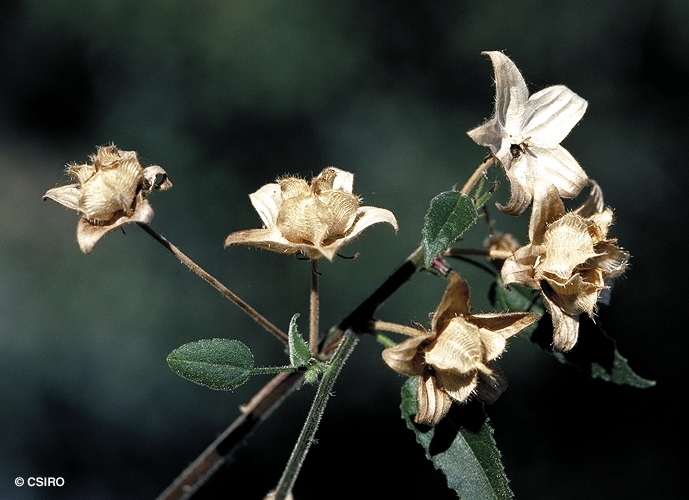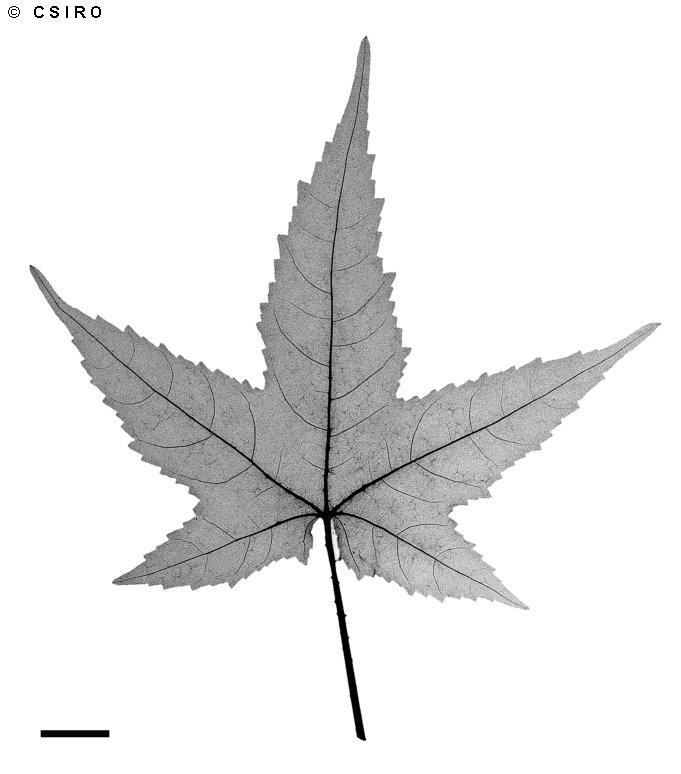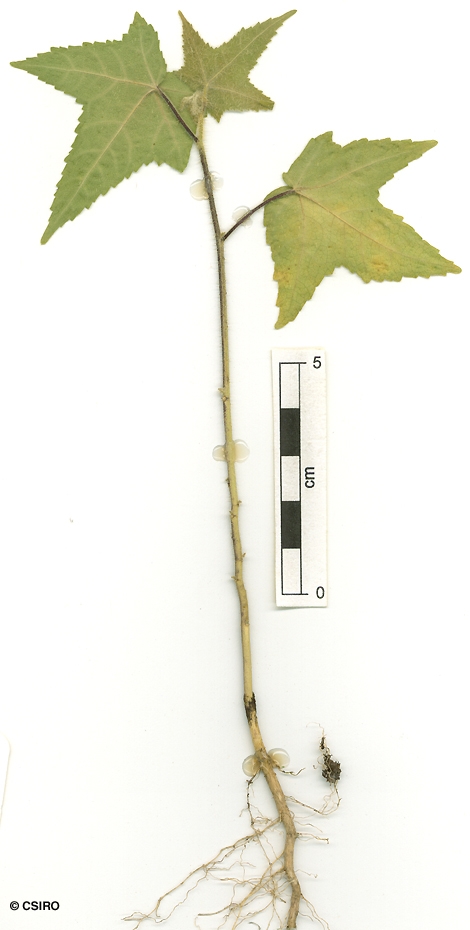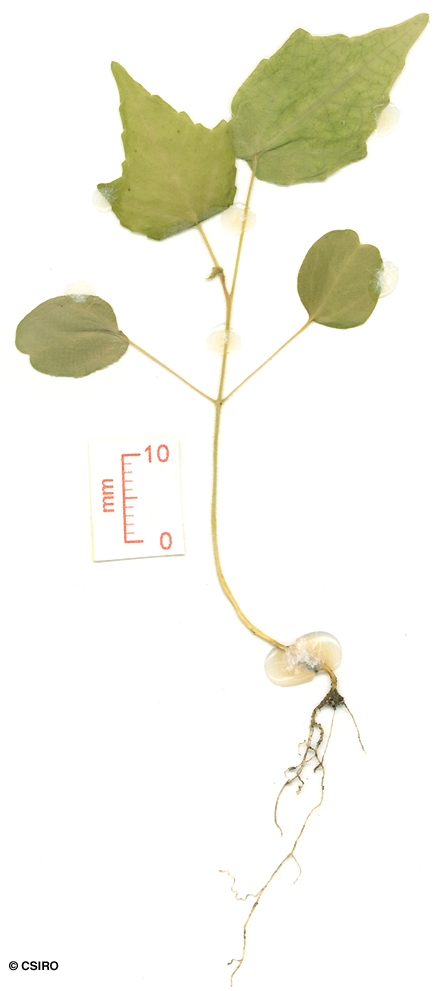Australian Tropical Rainforest Plants - Online edition
Hibiscus vitifolius L.





Linnaeus, C. (1753) Species Plantarum : 696 (1753). Type: Herb. Hermann, Vol. 4, fol. 39, Linn. n. 265; lecto: BM. Fide Brenan & Excell (1958) Bol. Soc. Brot. II, 32.
Tropical Fanleaf
Usually flowers and fruits as a herb but can grow into a shrub about 1 m tall.
Pedicel about 15-30 mm long. Epicalyx segments 7-12, each about 8-12 x 0.5-0.75 mm. Calyx about 6-9 mm long, outer surface clothed in simple and stellate or branched hairs. Petals about 25-50 mm long. Centre of corolla red. Staminal column about 10-15 mm long. Anthers U-shaped. Pollen orange. Ovary sericeous, style branches hairy.
Cotyledons +/- orbicular, about 9-13 x 10-13 mm. Petiole longer than the cotyledons. First pair of true leaves with toothed or lobed margins. At the tenth leaf stage: base of the leaf blade distinctly cordate. Numerous sessile pale-coloured glands visible on the underside of the leaf blade. Leaf blade clothed in simple 3-armed hairs. Petiole clothed in stellate hairs. Stipules linear, hairy, about 1-2 mm long. Stem clothed in both glandular and simple hairs. Seed germination time 181 to 252 days.
Occurs in WA, NT, CYP, NEQ, CEQ and southwards as far as coastal central Queensland. Altitudinal range from near sea level to 800 m. Grows as an understory plant in monsoon forest and vine thickets. Also occurs in Africa, Asia, Malesia and the Pacific islands.
Known as Fioria vitifolia (L.) Mattei in WA.
Fioria vitifolia (L.) Mattei, Bol. Ort. Palermo : 72 (1917).





